Unleashing Mischief: The Power of Antennas In Radio Hacks & SIGINT
Antenna Selection is vital when experimenting with SDR and SIGINT
In this article, we spoke about the introduction to software defined radio and radio hacking. Today we’ll be looking at antenna theory to compliment that and explore why it’s so important to the radio hacker.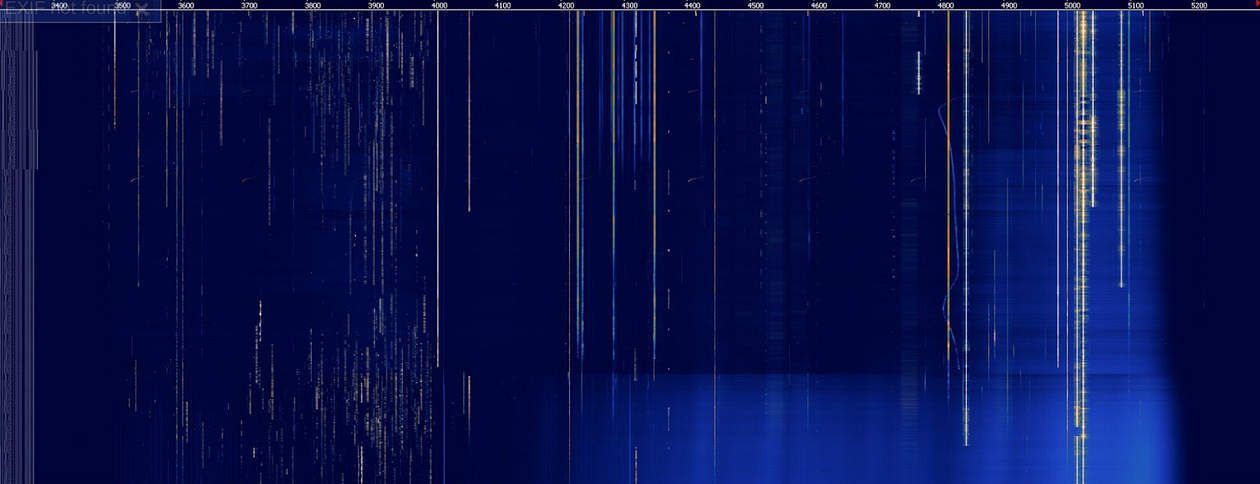 The SDR Waterfall will change how you interact with radio signals. Source: RTLSDR.com
The SDR Waterfall will change how you interact with radio signals. Source: RTLSDR.com
The ability to communicate instantly changed our world. From Wi-Fi networks that power our homes to airband monitoring for aviation enthusiasts, antennas play a crucial role in enabling these communications.
Understanding antenna theory is fundamental, especially when it comes to harnessing the power of Software Defined Radio (SDR). Additionally, we will provide simple antenna designs for Wi-Fi and airband monitoring using an RTL-SDR dongle.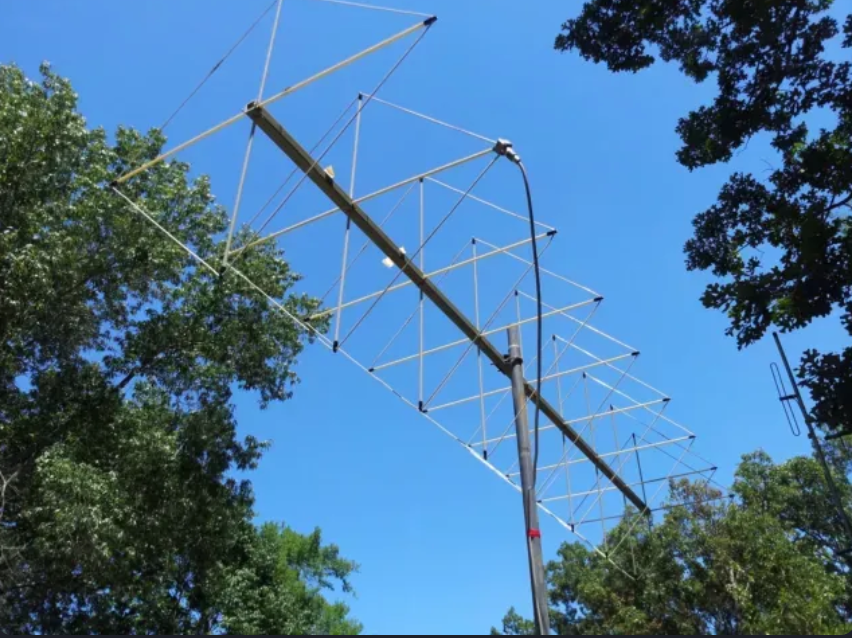 Space Communications require Circular polarization and high gain systems to offset distance. Source: M2Antennas
Space Communications require Circular polarization and high gain systems to offset distance. Source: M2Antennas
How it Works and Why It’s Important
Before we dive into the exploration of SDR, it’s essential to establish a solid foundation in antenna theory. An antenna is a device that converts electromagnetic waves into electrical currents or vice versa.
It’s the bridge between the electromagnetic spectrum and electronic circuits. Antenna theory encompasses various concepts, including radiation patterns, impedance, polarization, and gain. Let’s delve deeper into these concepts:
The Radiation Pattern
An antenna’s radiation pattern describes how it emits or receives electromagnetic waves in three dimensions. These patterns can be omni directional, directional, or even highly specialized for specific applications.
For instance, a dipole antenna, which is one of the simplest types, exhibits a bidirectional radiation pattern with a donut-like shape around the antenna’s axis. In contrast, a Yagi-Uda antenna, a highly directional antenna commonly used for television reception, has a narrow radiation pattern focused in one direction.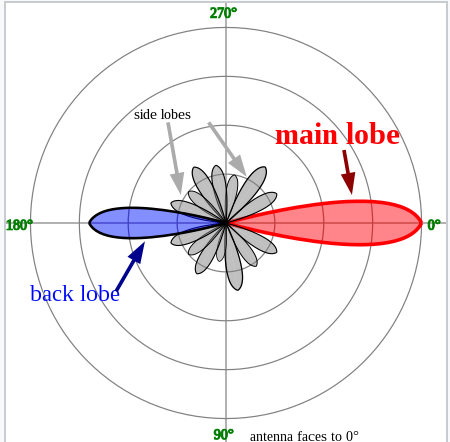 Yagi Antennas typically radiate by front anf back lobes, with a smaller side lobes. Source: Wikipedia
Yagi Antennas typically radiate by front anf back lobes, with a smaller side lobes. Source: Wikipedia
The Importance of Impedance Matching
Antennas need to be impedance-matched to the circuits they are connected to for optimal energy transfer. The concept of impedance matching ensures that the maximum amount of energy is transmitted or received.
Impedance matching involves matching the antenna’s impedance (typically 50 ohms for most RF systems) with the impedance of the connecting transmission line (usually coaxial cable). When the impedances are matched, energy transfer is efficient, and less energy is reflected back into the system.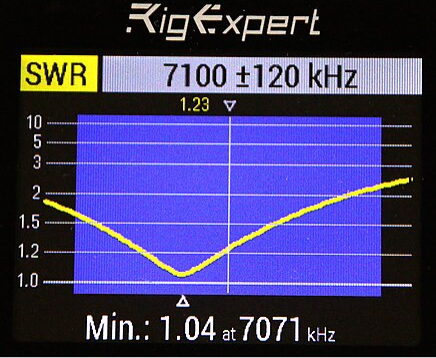 Impedance matching occurs when the system is “tuned” and the antenna polarization is the same as the transmitter and a level 50 OHMS. Source: WIkipedia
Impedance matching occurs when the system is “tuned” and the antenna polarization is the same as the transmitter and a level 50 OHMS. Source: WIkipedia
Antenna Polarization
Antennas exhibit polarization, which defines the orientation of the electromagnetic field they produce. Understanding polarization is crucial for compatibility between transmitting and receiving antennas.
Polarization can be linear (horizontal or vertical) or circular (right-hand or left-hand). When transmitting and receiving antennas have different polarization, signal loss occurs due to polarization mismatch.This mismatch can be as much as 20db, a significant drop in signal output.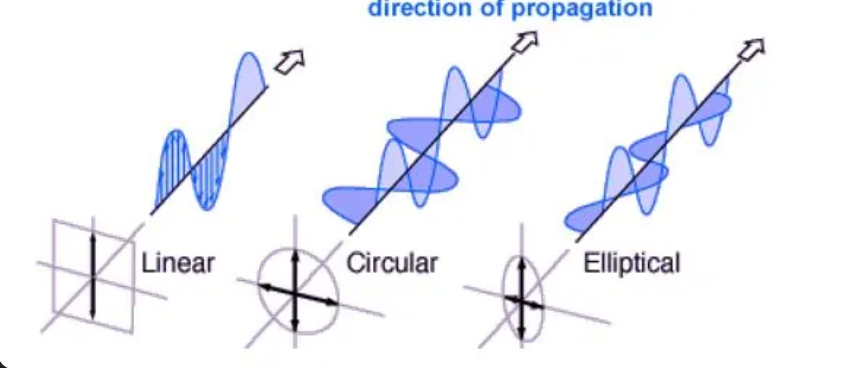 Polarisation shifts how the antenna sends the signal. There is linear, cicular and elliptical polarisation. Source: Wikipedia.com
Polarisation shifts how the antenna sends the signal. There is linear, cicular and elliptical polarisation. Source: Wikipedia.com
Antenna Gain
Antenna gain measures its ability to concentrate radiation in specific directions. High-gain antennas are used for long-range communication, while low-gain antennas offer broader coverage.
Antenna gain is often expressed in dBi (decibels relative to an isotropic radiator) or dBd (decibels relative to a dipole radiator). It’s important to note that while high-gain antennas can extend the range of communication, they also narrow the radiation pattern, making precise alignment with the target necessary.
Now that we have a solid grasp of antenna theory, let’s explore how it intersects with Software Defined Radio.
Antenna Theory and Software Defined Radio (SDR)
As we mentioned before, Software Defined Radio is a technology that allows users to implement wireless communication systems in software, rather than using dedicated hardware. It provides the flexibility to change communication parameters, such as frequency, modulation, and signal processing, through software configurations. SDR systems rely heavily on antennas to transmit and receive signals. Here’s how antenna theory relates to SDR:
Frequency Flexibility and Tuning
SDR systems can operate over a wide range of frequencies. Different antennas are designed to work efficiently within specific frequency bands. Understanding the frequency characteristics of your antenna is essential for SDR applications, as it dictates which bands you can receive or transmit.
For example, if you’re interested in monitoring both VHF and UHF frequencies with an RTL-SDR dongle, you would need an antenna that covers both frequency ranges effectively. A wideband antenna like a discone or a log-periodic antenna would be suitable in this case.
Impedance Matching and SDR Hardware
As mentioned earlier, antennas must be impedance-matched with the associated SDR hardware. SDRs often have a fixed input impedance (e.g., 50 ohms), so selecting an antenna with the same impedance is critical for efficient signal transfer.
When connecting an antenna to an RTL-SDR dongle or any other SDR receiver, you should use the appropriate coaxial cable with matching connectors (e.g., SMA or BNC) and ensure that the cable’s impedance matches that of the SDR device.
Dipole receiving antenna animation 6 800x394x150ms.gif
From Wikipedia, the free encyclopedia Click on a date/time to view the file as it appeared at that time.
en.wikipedia.org
Antenna Selection for SDR
The choice of antenna depends on the application. Different antennas are designed to excel in specific scenarios. Here are a few common antenna types and their applications in SDR:
1. Dipole Antenna: A dipole antenna is a simple yet effective choice for many SDR applications. It is often used for receiving signals in the HF (high-frequency) and VHF (very high-frequency) bands. Dipole antennas are relatively easy to construct and are a good starting point for SDR enthusiasts.
2. Yagi-Uda Antenna: The Yagi-Uda antenna is highly directional and offers high gain. It is commonly used for point-to-point communication and for receiving signals from a specific direction. SDR users interested in tracking or communicating with distant stations may opt for a Yagi antenna.
3. Discone Antenna: A discone antenna is a versatile choice for wideband reception, making it suitable for various SDR applications. It has a wide radiation pattern that covers a broad range of frequencies, making it ideal for scanning multiple frequency bands.
4. Loop Antenna: Loop antennas, such as magnetic loop or electrically small loops, are known for their ability to receive signals with minimal noise and interference. They are particularly useful for reducing electromagnetic interference in urban environments.
5. Log-Periodic Antenna: Log-periodic antennas are designed for wideband applications, making them suitable for scanning or monitoring multiple frequency bands. They offer relatively high gain across their frequency range.
Radiation Patterns and Signal Reception
The radiation pattern of an antenna plays a crucial role in signal reception and transmission. By understanding the radiation pattern, you can optimize the placement and orientation of your antenna for better performance.
For example, if you’re using an RTL-SDR dongle to monitor aircraft transmissions in the airband frequency range (108 MHz to 137 MHz), an omni directional antenna with a broad radiation pattern pointed at the sky would be ideal. This setup minimizes interference from ground-based sources and maximizes your chances of receiving signals from aircraft in the sky.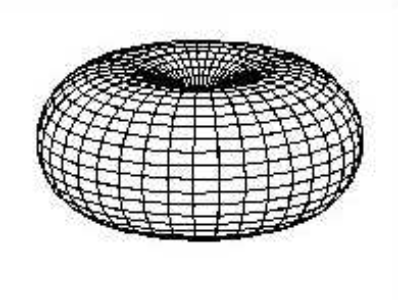 3D Radiation pattern of Half Wave Dipole Antenna. Source: Wikipedia
3D Radiation pattern of Half Wave Dipole Antenna. Source: Wikipedia
Simple Antenna Designs for Wi-Fi and Airband Monitoring
Now that we’ve explored the theory, let’s put our knowledge into practice by designing simple antennas for Wi-Fi and airband monitoring using an RTL-SDR dongle. These designs are suitable for beginners and provide excellent starting points for experimentation.
If you’re stuck on frequency tuning then you can use this formula to get on your way.
Wi-Fi Antenna Design: Dipole Antenna
A dipole antenna is a straightforward yet effective choice for Wi-Fi reception. Here’s how to create a simple dipole antenna for your RTL-SDR dongle:
Materials Needed:
- Coaxial cable (approximately half a wavelength for your desired Wi-Fi frequency)
- Two insulated copper wires
- Soldering iron and solder
- Connector suitable for your RTL-SD
R dongle (e.g., SMA connector)
Steps:
1. Cut the coaxial cable to the desired length (approximately 3 inches for 2.4 GHz Wi-Fi).
2. Strip the insulation from one end of the coaxial cable to expose the inner conductor and shield.
3. Solder one copper wire to the inner conductor and the other to the shield.
4. Extend the copper wires horizontally in opposite directions to form a dipole shape.
5. Attach the connector to the other end of the coaxial cable.
This simple dipole antenna can significantly improve your RTL-SDR’s Wi-Fi reception capabilities.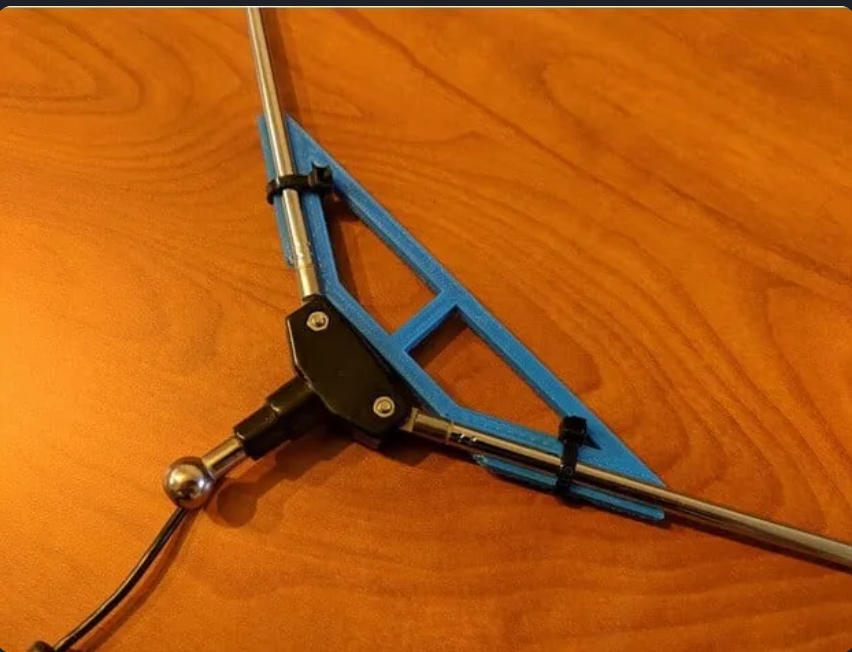 Dipole with 3d printed clamp. Source: RTL-SDR.com
Dipole with 3d printed clamp. Source: RTL-SDR.com
Airband Monitoring Antenna Design: Discone Antenna
A discone antenna is a versatile choice for wideband reception, making it suitable for airband monitoring. Here’s how to create a basic discone antenna:
Materials Needed:
- Sheet metal or aluminum foil
- Coaxial cable (with SMA connector)
- PVC pipe or other non-conductive material
- Soldering iron and solder
- Drill and screws
Steps:
1. Cut the sheet metal into the shape of a large cone with a flat, circular disc at the top.
2. Attach the coaxial cable to the center of the disc using a soldering iron.
3. Create a cone shape from the sheet metal and mount it on top of the PVC pipe.
4. Connect the other end of the coaxial cable to your RTL-SDR dongle.
The discone antenna’s design allows it to cover a wide frequency range, making it ideal for airband monitoring.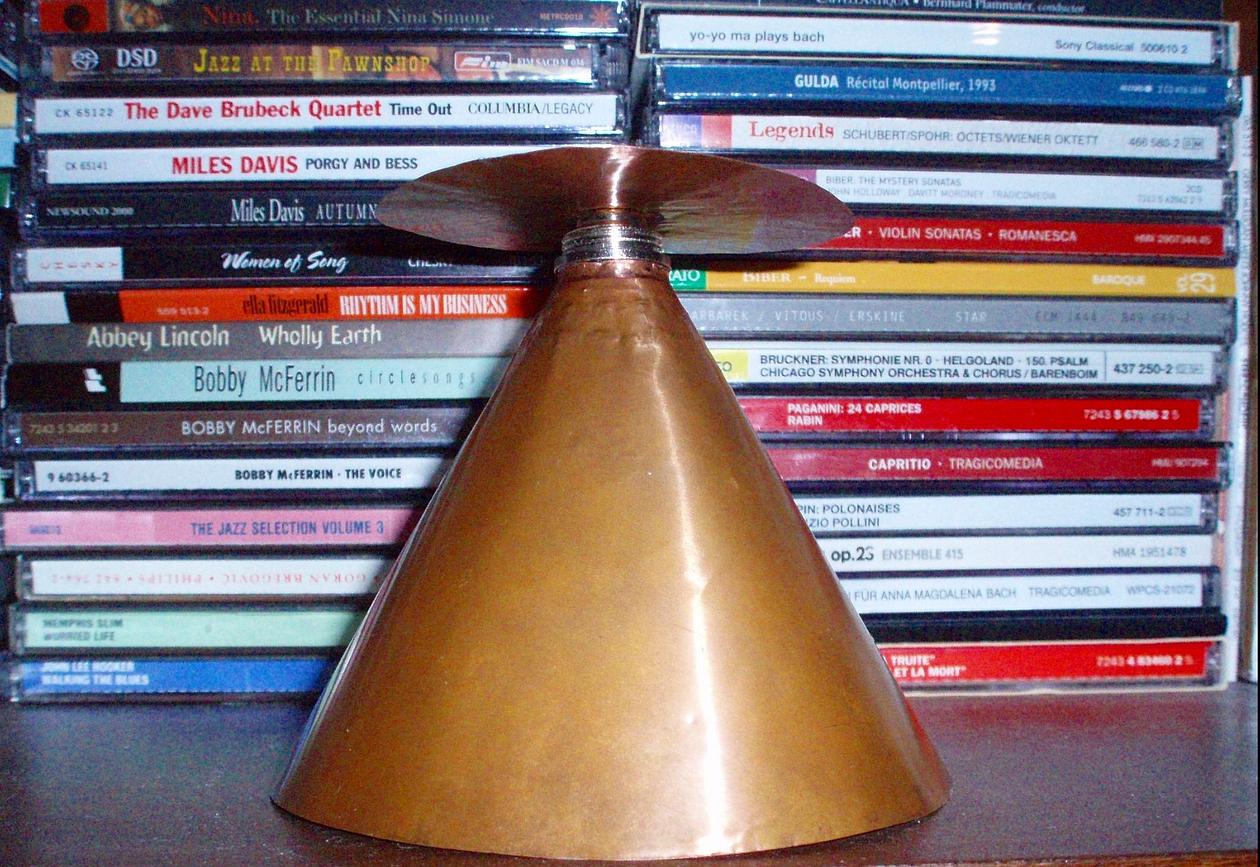 Copper Discone Antenna. Discone’s are a wideband antenna capable of recieving frequencies of a broad recieve range. Source: Wikipedia.
Copper Discone Antenna. Discone’s are a wideband antenna capable of recieving frequencies of a broad recieve range. Source: Wikipedia.
In Closing
Antenna theory is the cornerstone of efficient wireless communication, and understanding it is essential for anyone working with Software Defined Radio. Whether you’re interested in Wi-Fi networks or air band monitoring, selecting the right antenna and optimizing its performance can make a significant difference in your SDR experience. By delving into the world of antennas and integrating them with SDR technology, you can explore the vast spectrum of wireless communication and unlock new research possibilities with software-defined radio.
Now, at the end of this blog post, we’ve covered the key concepts of antenna theory, their relevance to SDR, and provided practical antenna designs for Wi-Fi and airband monitoring using an RTL-SDR dongle. Armed with this knowledge, you can embark on your journey to explore the limitless possibilities of Software Defined Radio and make the most of your wireless communication endeavors.
And remember, the antenna is one of the cheapest, most efficient gains you can add to your SDR system. So don’t be nervous experimenting with new designs and finding what works, because antennas are what radio is all about.
Medium has recently made some algorithm changes to improve the discoverability of articles like this one. These changes are designed to ensure that high-quality content reaches a wider audience, and your engagement plays a crucial role in making that happen.
If you found this article insightful, informative, or entertaining, we kindly encourage you to show your support. Clapping for this article not only lets the author know that their work is appreciated but also helps boost its visibility to others who might benefit from it.
🌟 Enjoyed this article? Support our work and join the community! 🌟
💙 Support me on Ko-fi: Investigator515
📢 Join our Telegram channel for exclusive updates or.
🐦 Follow us on Twitter
🔗 Articles we think you’ll like:
- Software Defined Radio & Radio Hacking
- What the Tech?! Personal Computers
✉️ Want more content like this? Sign up for email updates here






































